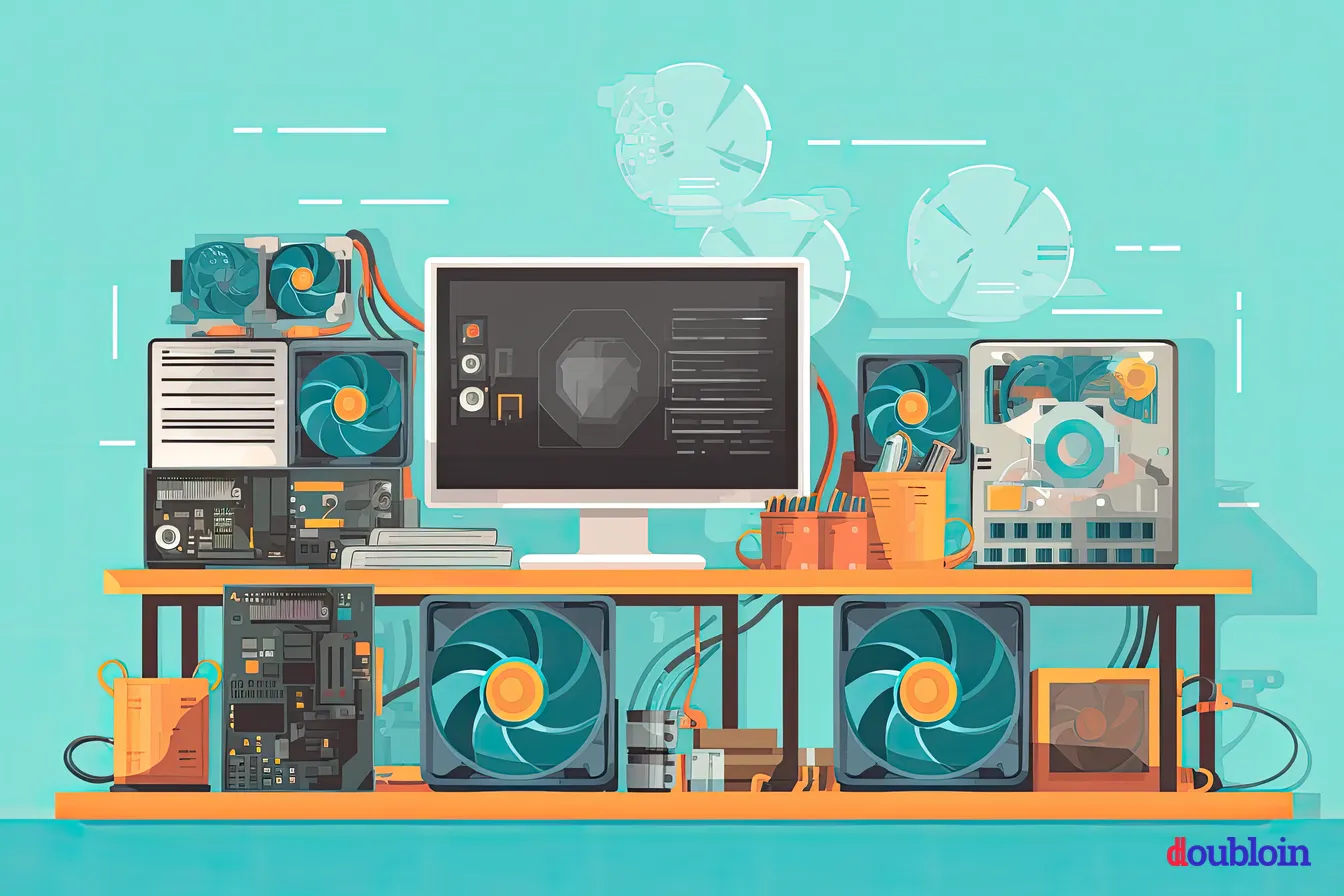Cryptocurrency mining has become a lucrative venture for many individuals seeking to capitalize on the decentralized nature of digital currencies like Bitcoin, Ethereum, and others. However, success in the crypto mining arena isn’t solely dependent on the desire to participate; it also hinges on the hardware used in the mining process. In this blog post, we’ll delve into the essential hardware requirements for cryptocurrency mining setup.

1. Mining Rig: The Heart of the Operation
The mining rig is the central hub for cryptocurrency mining, tailored with specialized hardware to mine digital currencies efficiently. Equipped with powerful GPUs or ASICs, it processes complex algorithms to validate transactions on the blockchain. The choice between GPU and ASIC depends on the targeted cryptocurrency and budget, emphasizing the importance of meeting specific hardware requirements. The rig’s motherboard provides stability and connectivity for seamless communication among components, fulfilling essential hardware prerequisites for successful cryptocurrency mining.
A robust power supply unit ensures continuous operation, and efficient cooling systems prevent overheating, contributing to the rig’s longevity. In essence, the mining rig, with its compact yet powerful design, embodies the indispensable hardware requirements for cryptocurrency mining success.
2. Graphics Processing Units (GPUs): Powering Versatility
Graphics Processing Units (GPUs) serve as the versatile workhorses in crypto mining. AMD Radeon RX and NVIDIA GeForce GTX are popular choices. They handle various algorithms, providing flexibility for mining diverse cryptocurrencies. Their parallel processing capabilities enable efficient computation, enhancing overall mining performance.
Miners often favor GPUs for their adaptability, allowing seamless transitions between different coins based on profitability. This versatility makes GPUs a cornerstone in many mining setups, showcasing their pivotal role in the dynamic and ever-evolving landscape of cryptocurrency mining.
3. Application-Specific Integrated Circuits (ASICs): Specialized Efficiency
Application-Specific Integrated Circuits (ASICs) are the mining elites. Tailored for specific cryptocurrencies, they outperform in efficiency. Brands like Bitmain and MicroBT dominate this specialized market. ASICs leave GPUs in the dust due to their targeted design, excelling particularly in Bitcoin mining. Their streamlined focus on hashing functions means unparalleled speed and lower energy consumption. T
These devices are not versatile, but their laser-focused efficiency makes them the go-to choice for serious miners looking to maximize returns on their investment. In the crypto mining arena, ASICs stand as the pinnacle of specialized hardware prowess.
4. Central Processing Unit (CPU): The Unsung Hero
The Central Processing Unit (CPU), often overlooked in discussions about hardware requirements for cryptocurrency mining, emerges as the unsung hero in this dynamic landscape. While GPUs and ASICs bear the brunt of the heavy lifting, the CPU quietly orchestrates operations, serving as the silent coordinator that manages diverse tasks beyond mining.
High-end CPUs from industry giants like Intel or AMD not only provide reliability and efficiency but also play a crucial role in ensuring seamless communication between various mining rig components.
5. Motherboard: The Backbone of Stability
The motherboard is the command center of your mining rig. It’s the foundation that ensures stability in your cryptocurrency mining operation. Compatible with your chosen CPU, the motherboard must boast ample PCIe slots for GPUs or ASICs. Opting for reinforced PCIe slots adds durability, crucial when accommodating heavy GPUs. A reliable motherboard fosters seamless communication among components, preventing bottlenecks. Choose wisely, as it dictates the overall stability of your mining setup, acting as the backbone that supports and integrates the various hardware components crucial for successful cryptocurrency mining.
6. Power Supply Unit (PSU): Fueling the Mining Rig
The Power Supply Unit (PSU) is the heartbeat of any mining rig, providing the essential energy to drive the entire operation. It must match the rig’s power requirements precisely to avoid overload or shortages. Trusted brands like Corsair, EVGA, and Seasonic are popular choices for their reliability. Calculating the total wattage consumed by components is crucial to prevent disruptions in mining activities.
A robust PSU ensures the continuous and efficient functioning of the mining hardware, safeguarding against potential downtime. In the world of cryptocurrency mining, a stable and powerful PSU is the cornerstone of uninterrupted success.
7. Cooling Solutions: Keeping Temperatures in Check
Maintaining optimal temperatures is crucial in cryptocurrency mining. The intensive computational workload generates significant heat. Efficient cooling solutions, such as fans or liquid cooling systems, are essential. They prevent overheating, ensuring consistent performance. Overheating can lead to hardware damage, reducing the mining rig’s lifespan.
Proper ventilation and cooling mechanisms safeguard components, enhancing long-term reliability. In the world of crypto mining, a cool and well-ventilated system is not just a luxury but a necessity for sustained success.
8. Storage: Where Data Resides
Storage is the silent backbone of crypto mining. It’s where the operating system, mining software, and transaction data call home. Opt for Solid State Drives (SSDs) over traditional Hard Disk Drives (HDDs) for quicker data access, boosting overall system responsiveness. In the realm of crypto, a nimble storage solution ensures seamless operations, safeguarding against bottlenecks.
Think of it as the warehouse where your mining rig retrieves and stores the crucial data it needs to navigate the vast landscape of the blockchain. In essence, storage isn’t just a detail; it’s the repository that keeps your mining ambitions securely intact.
Conclusion:
Successful cryptocurrency mining hinges on the careful selection and integration of various hardware components. Whether building a GPU-based rig for versatility or investing in ASICs for specialized efficiency, each piece plays a crucial role in the mining operation. Additionally, attention to cooling, power supply, and storage ensures the longevity and reliability of the mining rig. By understanding the hardware essentials, aspiring miners can embark on a journey to navigate the complex and rewarding world of cryptocurrency mining.
Also Checkout – Ways to Mine Cryptocurrency